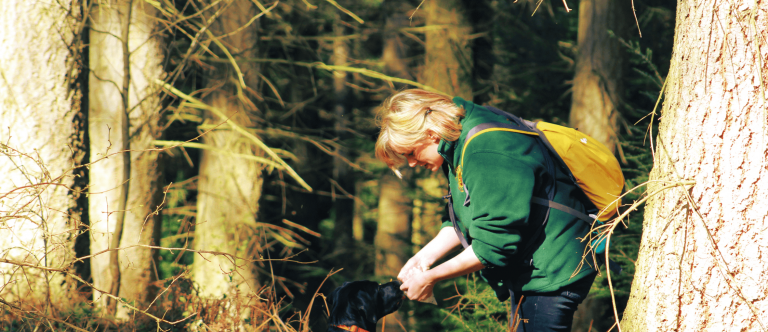Use of Dogs in Conservation
WHY USE WORKING DOGS FOR SPECIES CONSERVATION?
“IT IS THE DOG’S AMAZING SENSE OF SMELL THAT MAKES HIM SUCH A PERFECT SEARCH TOOL IN A WILDLIFE DETECTION ROLE. A DOG SEES THE WORLD THROUGH ITS NOSE.”
A dog’s sense of smell is at least 100,000 times more sensitive than ours. Humans have around 6 million scent glands in our noses; dogs possess up to 300 million. They can detect a single teaspoon of sugar in a million gallons of water – enough to fill two Olympic-sized pools.
Where we rely on sight, dogs are led by their nose. They can cover vast areas and rough terrain, and locate individual scent particles even if those particles are masked by other scents. They can find scents that are concealed within walls, containers and sand; even underground and up trees. And they do it with virtually limitless energy.
These skills mean that dogs can find targets up to 40 times faster than human search teams with near-perfect accuracy. Research suggests that dogs are effective in detecting the signs of animals at least 96 percent of the time. In one recent pine marten scat project, the human project leader found 24 scats in six months, an average of four per month. Our dog Luna found eight in just two days.


HOW DOES THIS HELP CONSERVATIONISTS?
Every target scat is like gold to researchers. The location and quantity of the scat helps researchers compute a population count for a location and formulate an estimate for a larger area. DNA tests can identify individual animals and who is related to whom. Stools can be used to evaluate diet, hormone levels, pregnancy rates, stress signals and disease. Toxicology tests reveal if the animal is being poisoned.
All that information helps conservationists to keep tabs on endangered animals without having to trap, tranquilise or tag them.
Scat training is also successful for a growing number of ecological applications. We can train dogs to sniff out invasive plant species, tree disease and other signs of ecological trouble. And dogs can stop poaching dead in its tracks, literally hounding the bad guys by detecting snares, poisons and illegal animal products.
We believe that dogs are the best way in the world to collect valuable conservation data. See how we can help your organisation. Contact us today.
